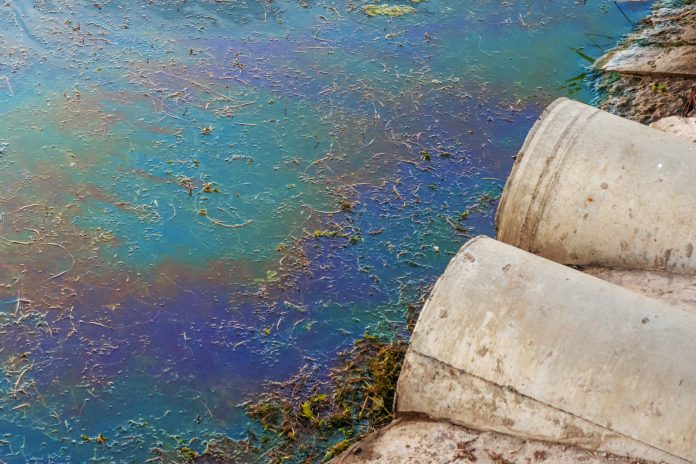The fashion industry is now the second-largest generator of pollution on Earth after the oil industry, which is driven by the escalating trend of ‘fast fashion’
The majority of manufacturing processes in the industry are dependent on water. To put it in perspective, one cotton t-shirt uses enough drinking water to sustain one human for three years; 2,700 litres. Multiply that by 20 garments a year for 7.7 billion people and you begin to grasp the magnitude of the problem. As reference, it can take up to 200 tonnes of fresh water to produce a tonne of dyed fabric. We are increasing our personal use and depleting our useable supplies of water at such a rate that demand will outstrip supply by 2030.(1)
Awash with chemicals
Chemicals are a key component during the manufacturing process of clothes. Chemicals are used during the fibre production, dyeing, bleaching and wet processing of each of our garments. Over 8,000 synthetic chemicals are used in the various processes that turn raw material into fabrics. As an estimate, it takes 200 tonnes of water to produce 1 tonne of dyed fabric. This requires sourcing fresh water and releasing water that is tainted, rendered toxic, undrinkable or otherwise polluted back into the ecosystem. A large majority of textile manufacturing occurs along the waterways of the developing world. The harmful effect of pollution on communities which rely on waterways for their food, watering livestock and sustenance, is immeasurable.
Wastewater produced during the manufacturing process is often discharged directly into rivers and waterways, meaning it should comply with discharge regulation to avoid polluting the environment and causing irreparable damage. However, this is often not the case. Unfortunately, these chemicals are often still present in wastewater, even in trace levels, when they are discharged into the environment, which has been proven to cause lasting damage.
Eliminating contaminants in water
However, the process of treating wastewater itself is not without its challenges. In traditional wastewater treatment processes such as Advanced Oxidation Processes (AOPs) combined with Hydrogen Peroxide, Fenton’s reagent (a combination of chemicals) and Reverse Osmosis, large doses of chemicals including biocides are used to eradicate contaminants or prevent the processes from fouling and blocking.
This brings with it a significant ongoing operating cost along with a toxic sludge which then needs to be treated. This sludge created through using chemicals is incinerated or sent to landfill, which is equally as damaging to the environment and often these chemical reliant methods fail to target difficult to remove, trace level pollutants.
The final stage of water treatment known as tertiary or quaternary has always been challenging and as a result, it’s now become a necessity for industries to use a combination of processes for an effective treatment result.
The eco-friendly answer
Advanced technology has been developed to fill the gap in the market for environmentally friendly treatment systems which avoid the use of chemicals and target the final upper percentile which normally goes untreated.
There are now tertiary treatment options available which are designed as a final ‘polishing’ step for the persistent hard to treat contaminants. The technology can help textile manufacturers meet the many strict discharge consent limits with respect to organics in the form of COD, colour and specific hazardous chemicals such as Nonylphenols.
The technology avoids the need for chemicals and targets specific pollutants with a combination of adsorption and electrochemical oxidation. Rather than dosing wastewater with chemicals, the water percolates through a carbon-based media which the organic pollutants ‘stick’ to. A low electrical current is applied to the bed of media to oxidise the organics and simultaneously regenerate the surface of the media to allow for further treatment. It’s clear that environmentally-friendly wastewater treatment must form part of an industry-wide effort to counteract pollutants entering the environment.
Fortunately, the tide is beginning turn as consumers and businesses alike become more aware of the potential damage the fast fashion industry is causing. More stringent regulation and fines for businesses found polluting the environment with wastewater will undoubtedly bring change. Businesses who use water in their manufacturing processes must take responsibility and utilise the latest technology before it’s too late.
Rapid advances in water treatment technology mean organisations can now treat wastewater in an environmentally considerate way while being able to reuse water and guaranteeing discharge regulations are met.











